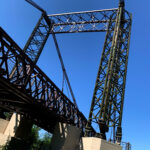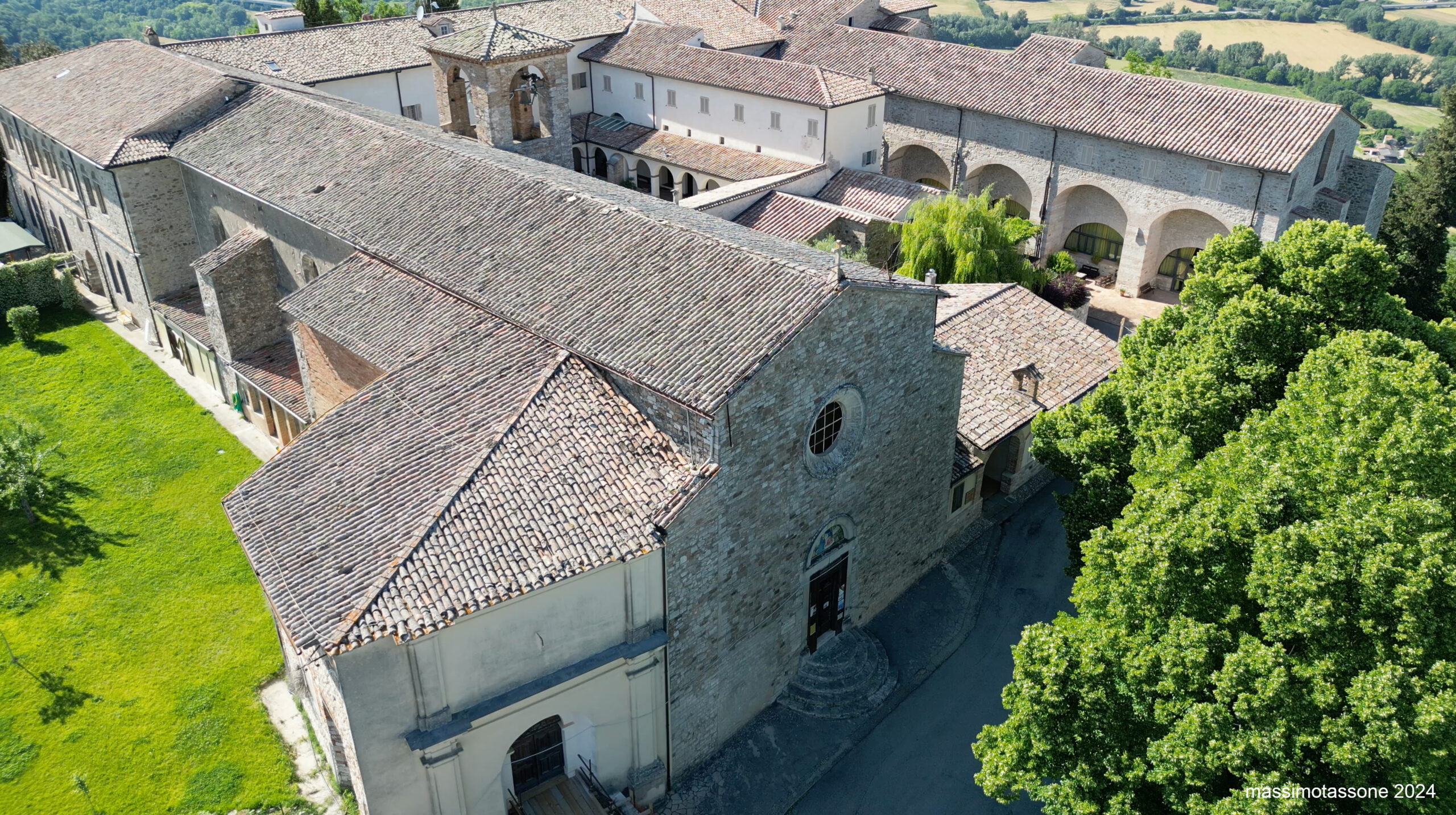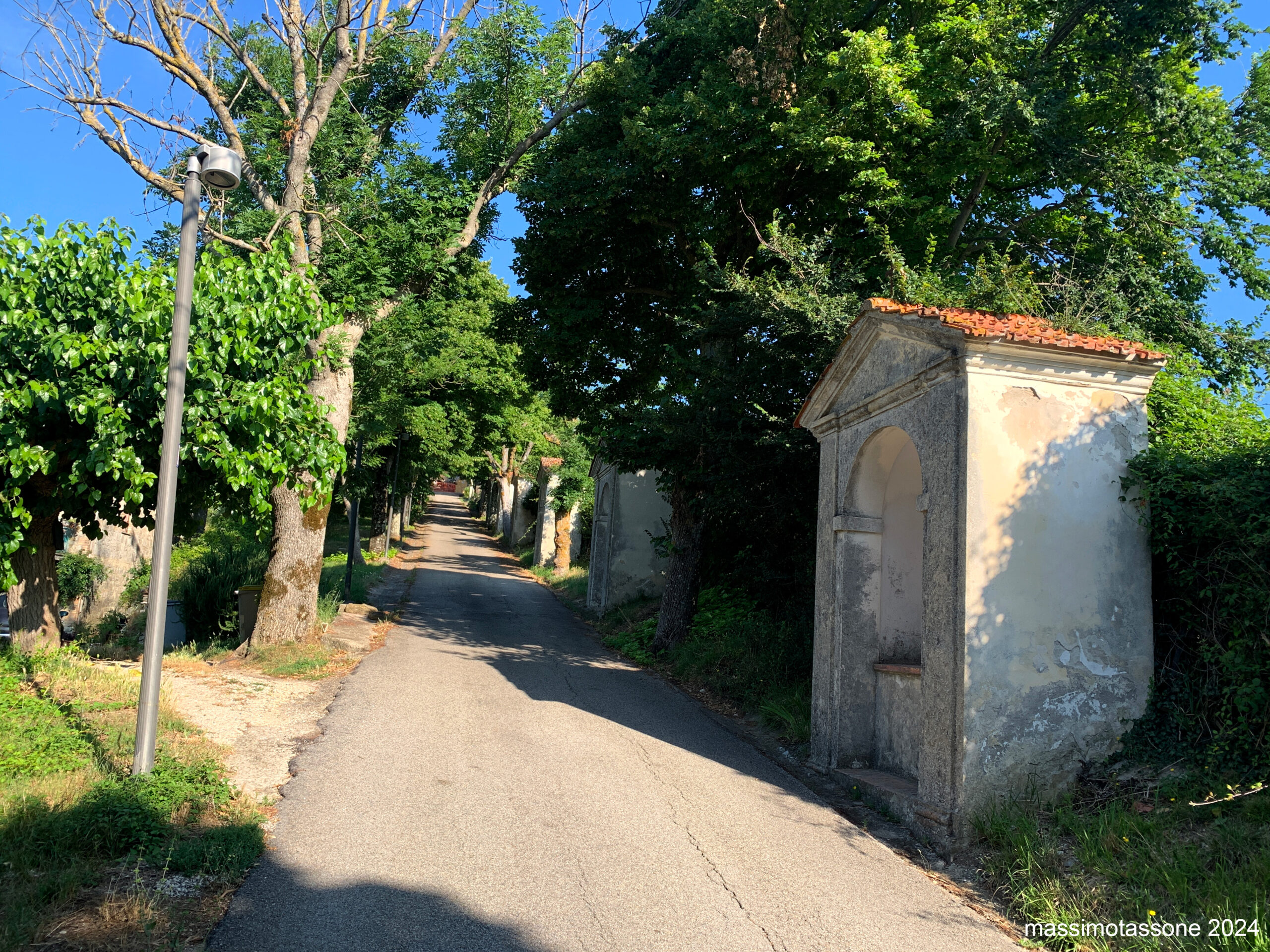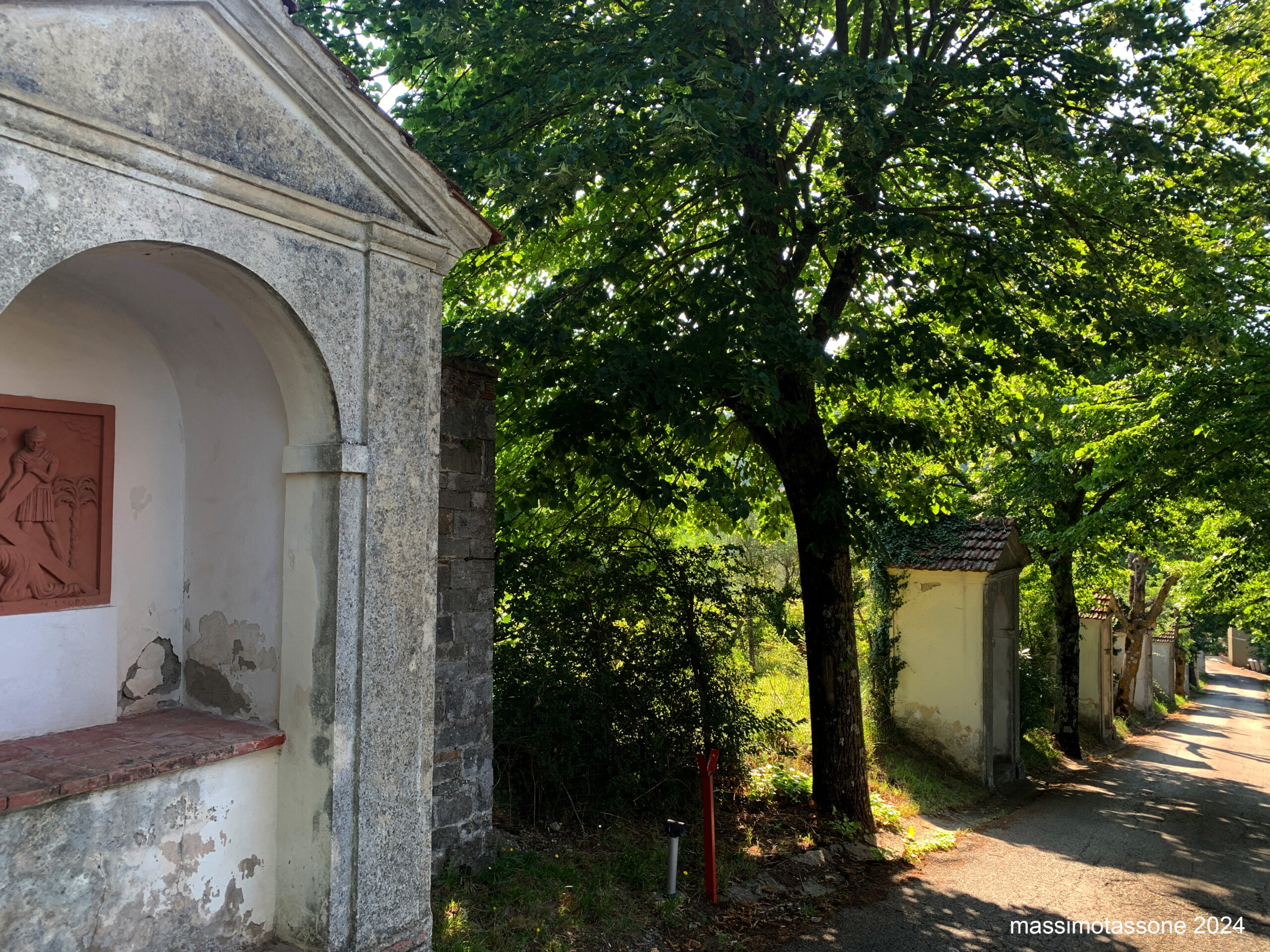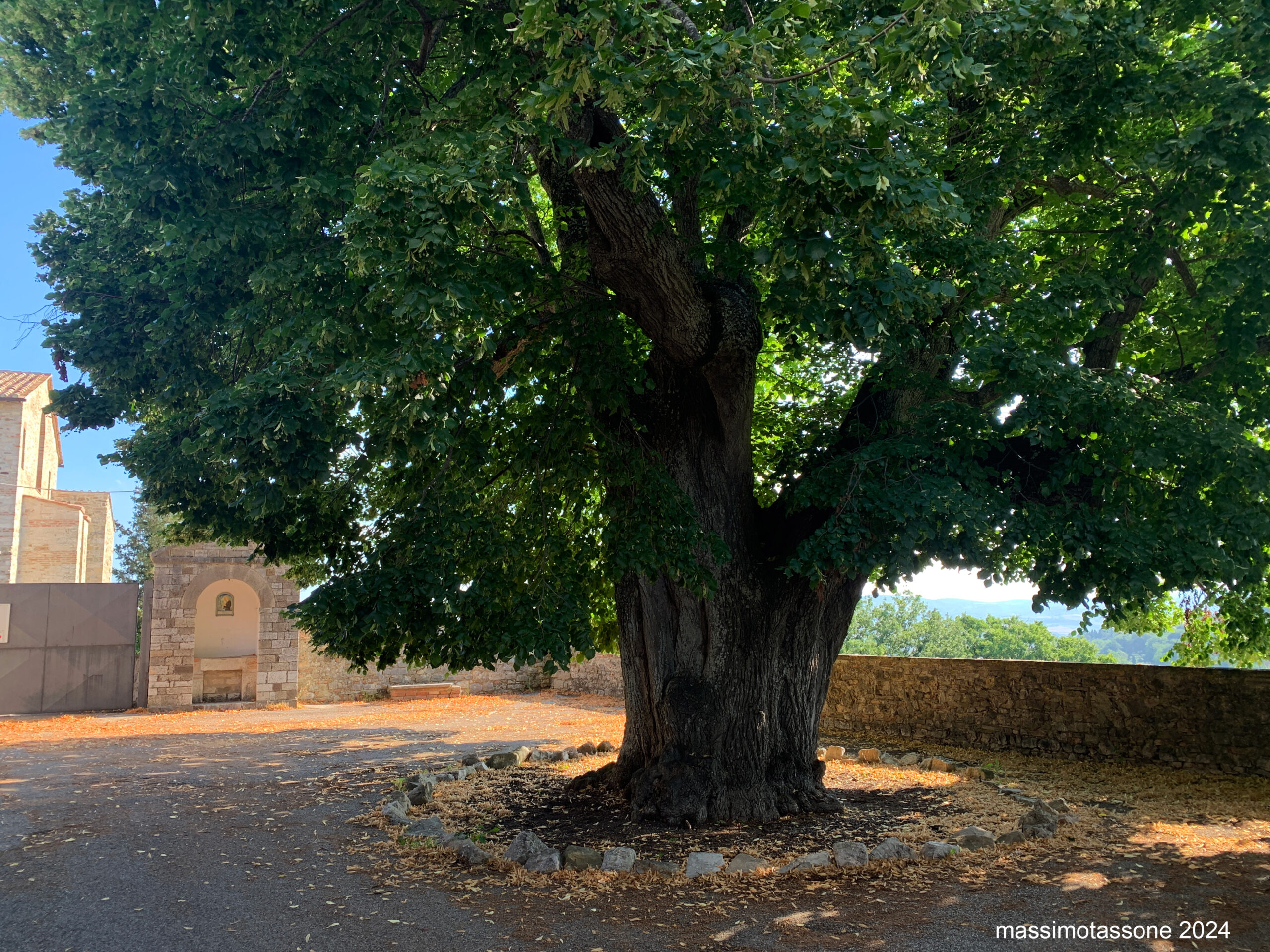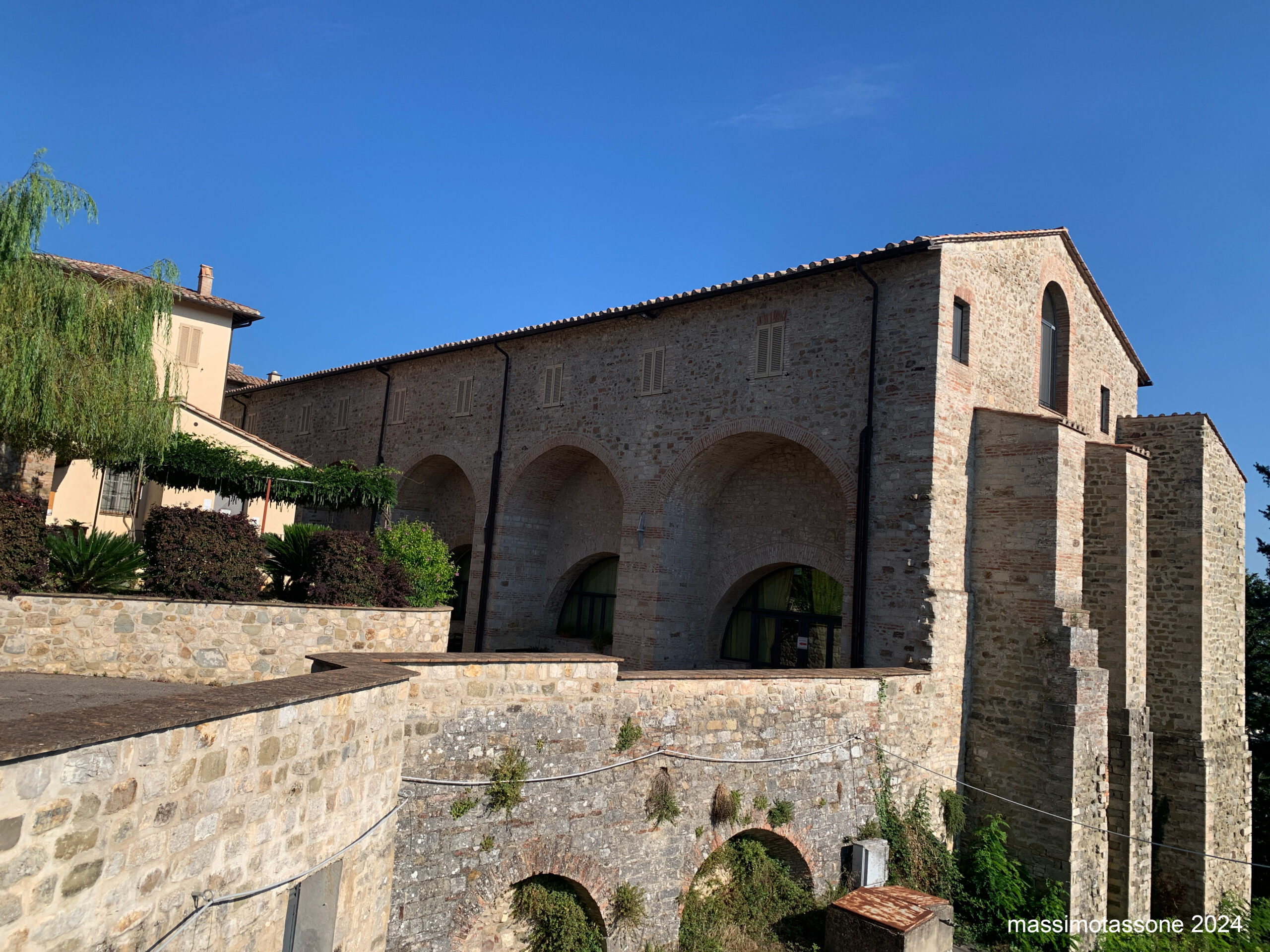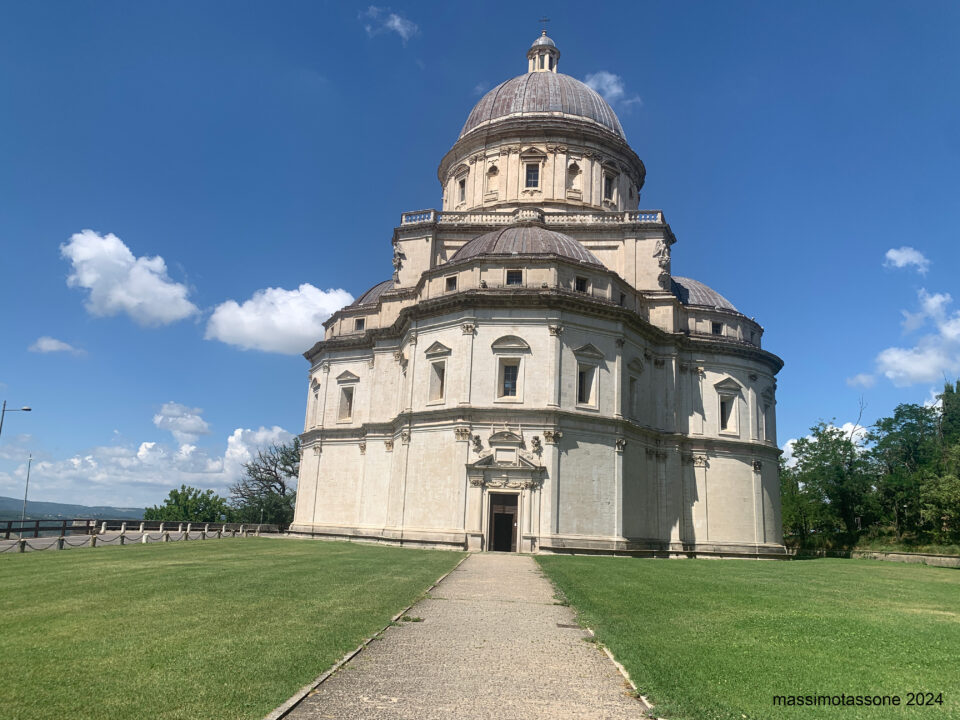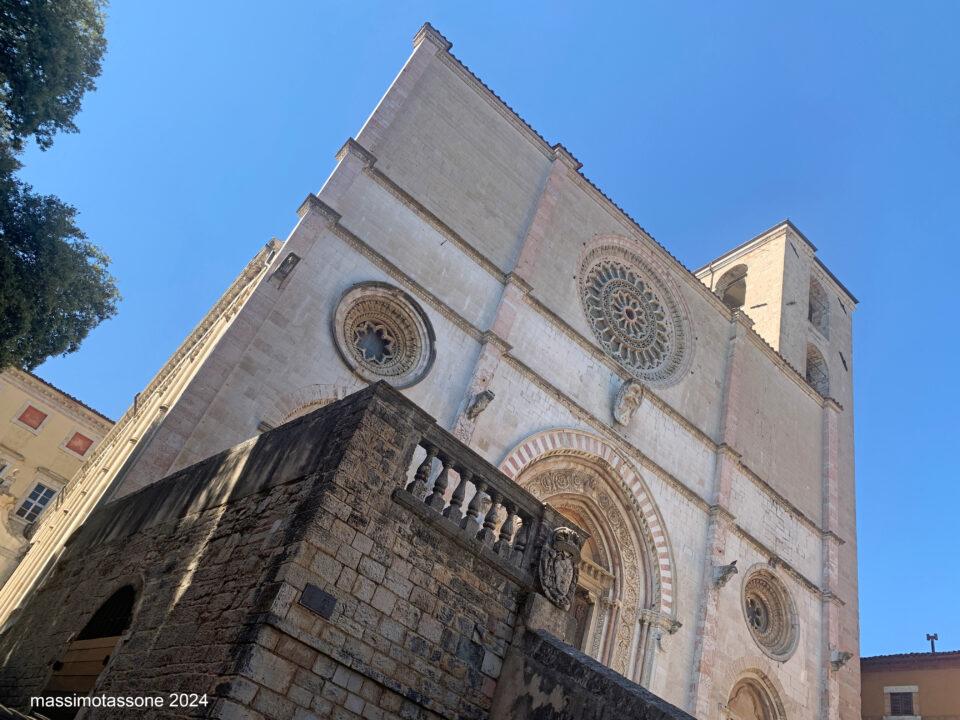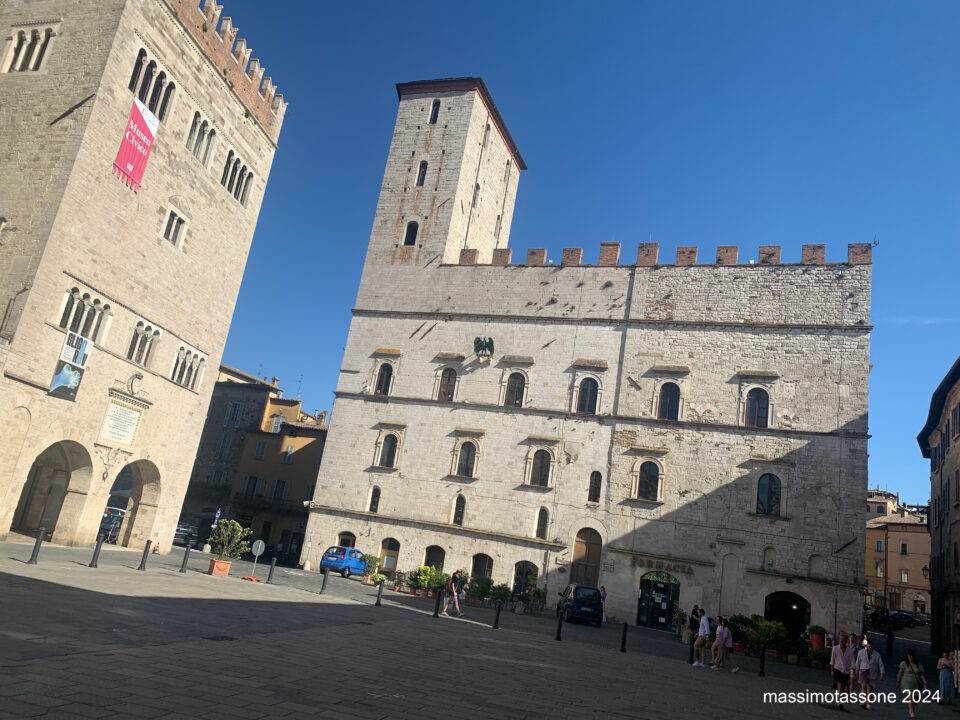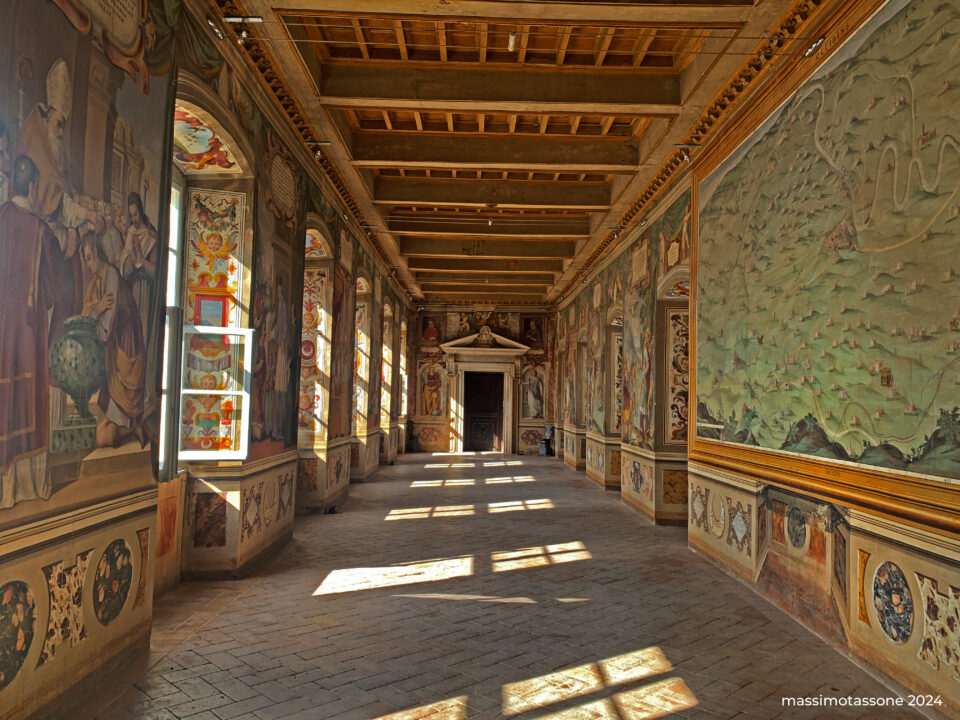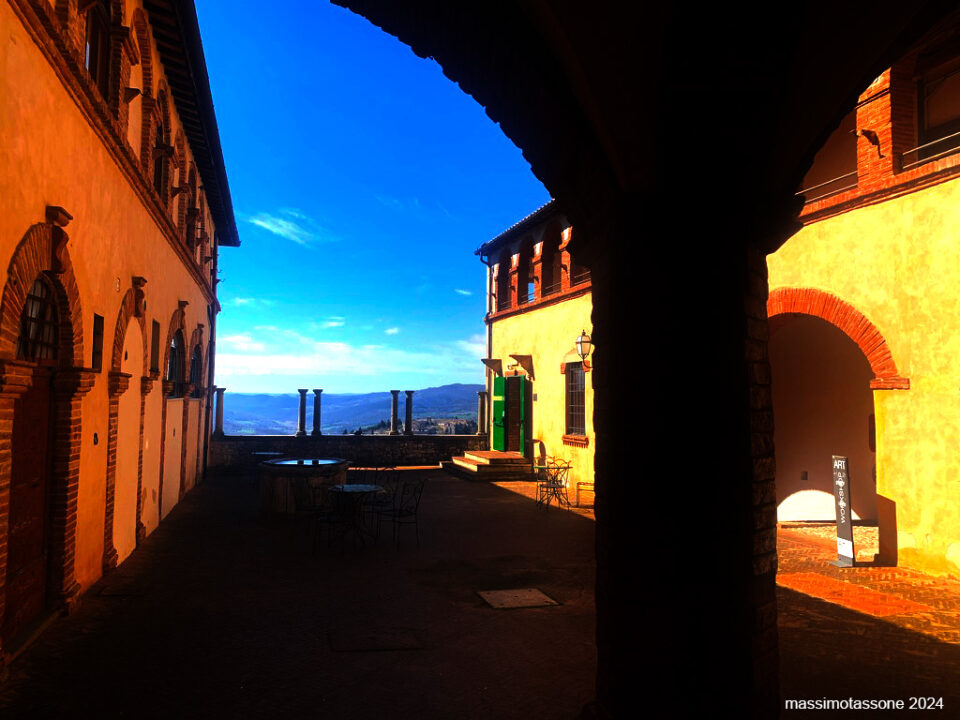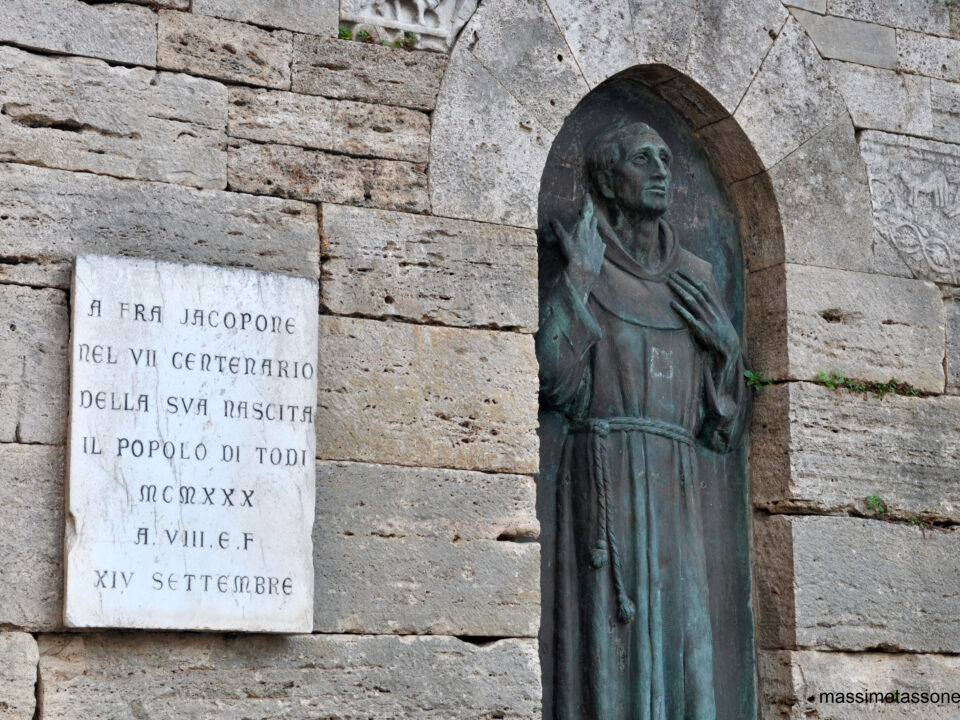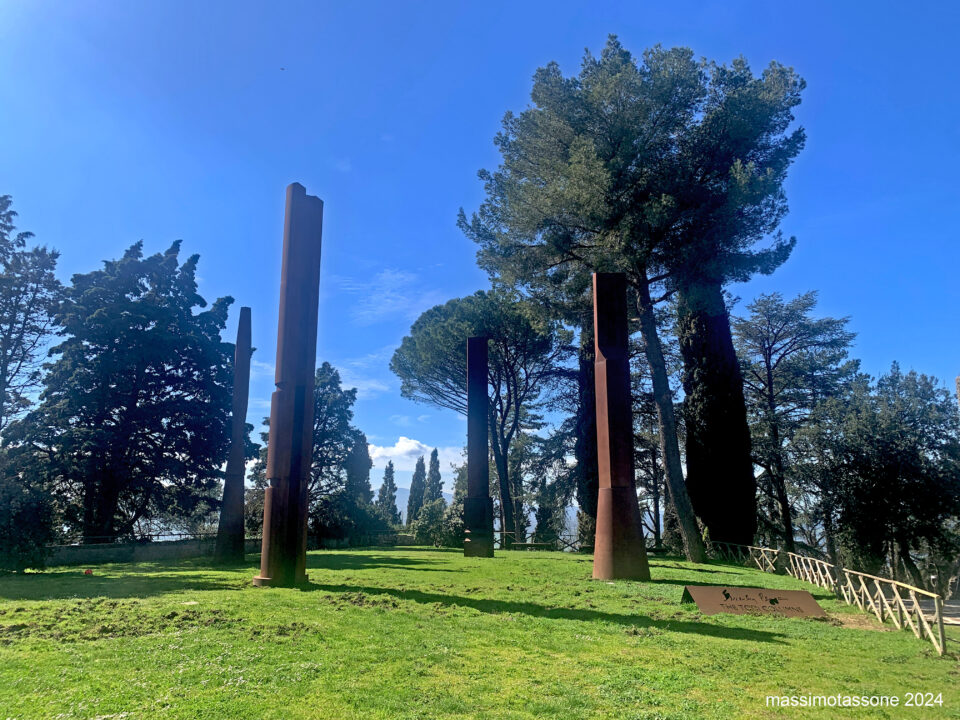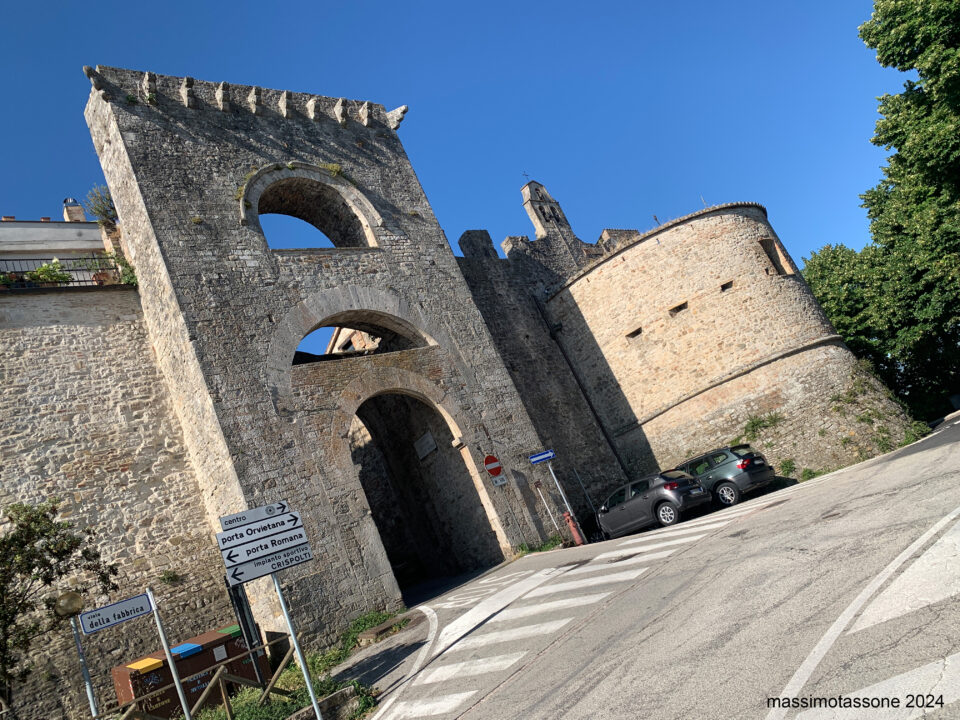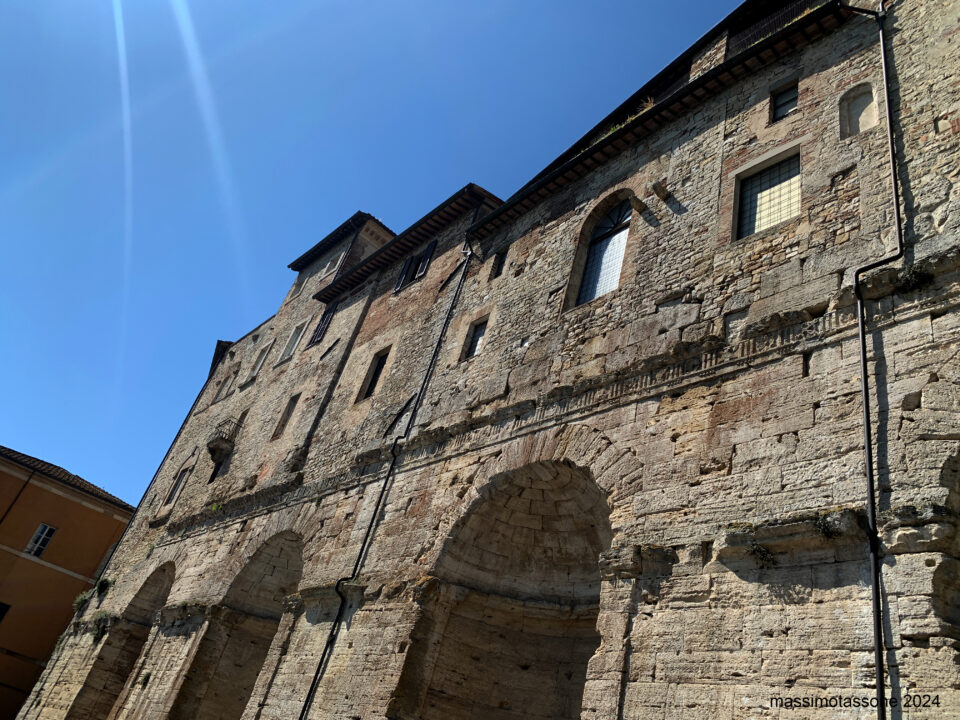In ancient times, this location was known as "Monte Mascarano," meaning "Mountain of Spirits" ("mascha" is thought by experts to mean "witch," "ghost," or "spirit").
It is believed that during the Etruscan period, the hill was a sacred place, a necropolis with temples and shrines dedicated to various deities, with Mars and Bellona being the primary gods. However, there are no written records, only archaeological findings (such as the famous statue of Mars) discovered near the current convent's walls.
The true history of the site began on October 24, 1235, when Bishop Bonifacio, along with the cathedral chapter, granted, at the request of Pope Gregory IX, the "privilege" to build a monastery for nuns of the Order of the Poor Ladies (Clarisses) on the hill. The land for this purpose was donated by Buono, abbot of San Fortunato in Todi. In the same year, Pope Gregory IX suppressed the Abbey of San Leucio, adjacent to San Fortunato, and gave the large property of the abbey to the new monastery of Montesanto, while the church and buildings were handed over to the Dominican friars. The friars remained there until 1371 when the entire complex was demolished to build the Rocca. Over time, due to the holy life of the nuns, the hill's name changed from "Monte Mascarano" to "Montesanto" (Monastery of Santa Maria of Montesanto, or Monastero Maggiore). By 1320, the community consisted of about 40 nuns. In 1433, the Clarisses may have permanently abandoned the monastery, as confirmed by Pope Eugenius IV’s bull on March 21, 1438. It is likely that Iacopone da Todi was part of this community, and may have even died there. The transfer of his bones from Montesanto to San Fortunato in 1433 occurred because the nuns had to abandon the hill in 1367 when the monastery was converted into a fortress by Cardinal Egidio Albornoz.
In the spring of 1367, Albornoz, as the final act of the reconquest of the Papal States, besieged and took Todi. He expelled the religious and turned the hill into a military fortress. This fortress, located against the city walls, was part of Albornoz’s new political strategy called the "policy of fortresses," intended to discourage rebellions from cities while allowing them some autonomy. The town of Todi, while under the control of the Church and governed by Lieutenant Ugolino da Montemarte, kept a castellano and a military garrison at Montesanto. Over time, Montesanto became a strategic military point, possibly fortified and renewed by the famous Catalano degli Atti. Montesanto endured further hardships under commanders such as Pandolfo Malatesta, Biordo Michelotti, King Ladislaus of Naples, and Braccio Fortebraccio. Meanwhile, the other Rocca, built by Ugolino da Montemarte on Todi Hill, grew more important, and Montesanto was gradually abandoned.
In 1448, the famous Franciscan preacher Roberto Caracciolo of Lecce came to Todi and invited the town’s leaders to give the Montesanto site to the Minor Friars so that they could build a convent there. The Clarisses, still the owners, demanded compensation for the restoration of their monastery within the city walls.
The current building was created from the ruins of the fortress, utilizing what was still standing. The visible remains of the fortress include an orthogonal quadrilateral of over 50 meters on each side, open in a U-shape toward the city; a large ground-floor room covered with barrel vaults and small Romanesque windows running along one side; a large staircase of 26 steps leading to the upper floor; single-light windows of travertine with external chamfers on the southern side, now adapted as a church. The Minor Friars of San Francesco have been at Montesanto since 1448, with the convent housing around 25 to 35 friars. It also housed a novitiate, a theology school with excellent professors, and a hospital for the friars of Umbria. The convent also had a valuable library rich in parchment manuscripts, incunabula, and rare editions, some of which were later moved to the municipal library of Todi and the Seraphic Province of Church New in Assisi. It also had a pharmacy with lay brothers providing assistance to the poor.
During the French occupation, numerous works of art were sent to France as part of Napoleon’s spoils, and most of them never returned. One such piece, The Virgin and Jesus by Spagna, was taken to the Musée Napoléon and later transferred to the Louvre.
In the meantime, the friars moved a few meters from the "cloister" to a farmhouse, which they gradually transformed into a small convent, where they stayed until 1895. On the morning of October 4, 1895, the solemn feast of St. Francis, the friars signed a contract to buy back the Convent of Montesanto, paying a total of 21,678.32 lira in five installments. From 1916 to 1970, the building housed the Seraphic College, with about 100 boys aspiring to the Franciscan life. On January 1, 1977, the conventual church became a parish church under the title: Parrocchia di Maria SS.ma Assunta in Montesanto. In 1835, the famous statue of Mars of Todi, a precious bronze statue dating back to the 5th century BC, was discovered in the area and is now housed in the Vatican Museums.
The Church
The church, built at the end of the 15th century, was consecrated on October 23, 1633, by Bishop Ludovico Cenci, as evidenced by the inscription carved into a stone in the external façade. It is dedicated to the Assumption of the Virgin Mary and St. Anthony of Padua. In the first chapel on the right, there is a large fresco from the 15th-16th centuries depicting the nativity scene, commissioned by the Gentiloni family. Above the steps of the presbytery, on the right, during the removal of the side altars, a fresco of Blessed Bernardino da Feltre was discovered in 1956, which is the only visible sign of the presence of Spagna in this convent, for whom he created his masterpiece The Coronation of the Virgin, currently housed in the Municipal Art Gallery of Todi. The main altar was the original location for this masterpiece. Commissioned on September 12, 1507, for 200 gold ducats, the work took four years to complete and was finished in 1511. For over three centuries, it adorned the main altar of the Church of Montesanto until it was taken during Napoleon’s time and later returned, but without its original frame and without the three panels from the predella, which are now housed in the Louvre Museum.
In the center of the apse is a fresco of the Crucifixion with the Virgin, St. John, two Angels, and St. Francis. The work is attributed to the Foligno school, possibly by Alunno. The left wall features the "Chapel of the Crucifixion," built by the noble Vici family of Stroncone in 1612. Two saints from this family, Blessed Antonio Vici and Blessed Giovanni Vici, are depicted at the sides of the altar behind the columns of the chapel. The oil paintings on the altar were created by the Todi painters Pietro Paolo Sensini and Andrea Polinori. The rest of the chapel was decorated by the famous Assisi painter Cesare Sermei in 1612, also commissioned by the Vici family.
The altar features 16th-century wooden sculptures: Crucified Jesus, the Virgin, and St. John the Evangelist. Beneath the altar are the remains of two Beati: Blessed Ruggero da Todi, the first companion of St. Francis, and Blessed Andreuccio da Todi, one of the early 13th-century friars. The last chapel on the left, known as the "24th Station of the Via Crucis," dates to the end of the 16th century. The 13 external chapels of the "Via Crucis" were built in 1721, restored by Blessed Leopoldo da Gaiche in 1787, and later again in 1905. The chapel of the "14th Station" was enlarged and turned into a hexagonal shape in 1732 and now serves as a permanent nativity scene.
Things worth admiring include the centuries-old lime tree at the entrance, traditionally said to have been planted during St. Bernardino of Siena’s preaching in Todi in 1426, and the church itself, rich in artwork from the 15th to the 18th century. A special mention goes to the extensive and well-equipped library, containing manuscripts, incunabula, over two hundred 16th-century books, valuable works from various eras, a 1746 "Herbarium Pharmaceuticum" with 412 specimens of herbs, and large parchment choirs with beautiful miniatures. Additionally, in 1983, a large 14th-century hall was restored.


